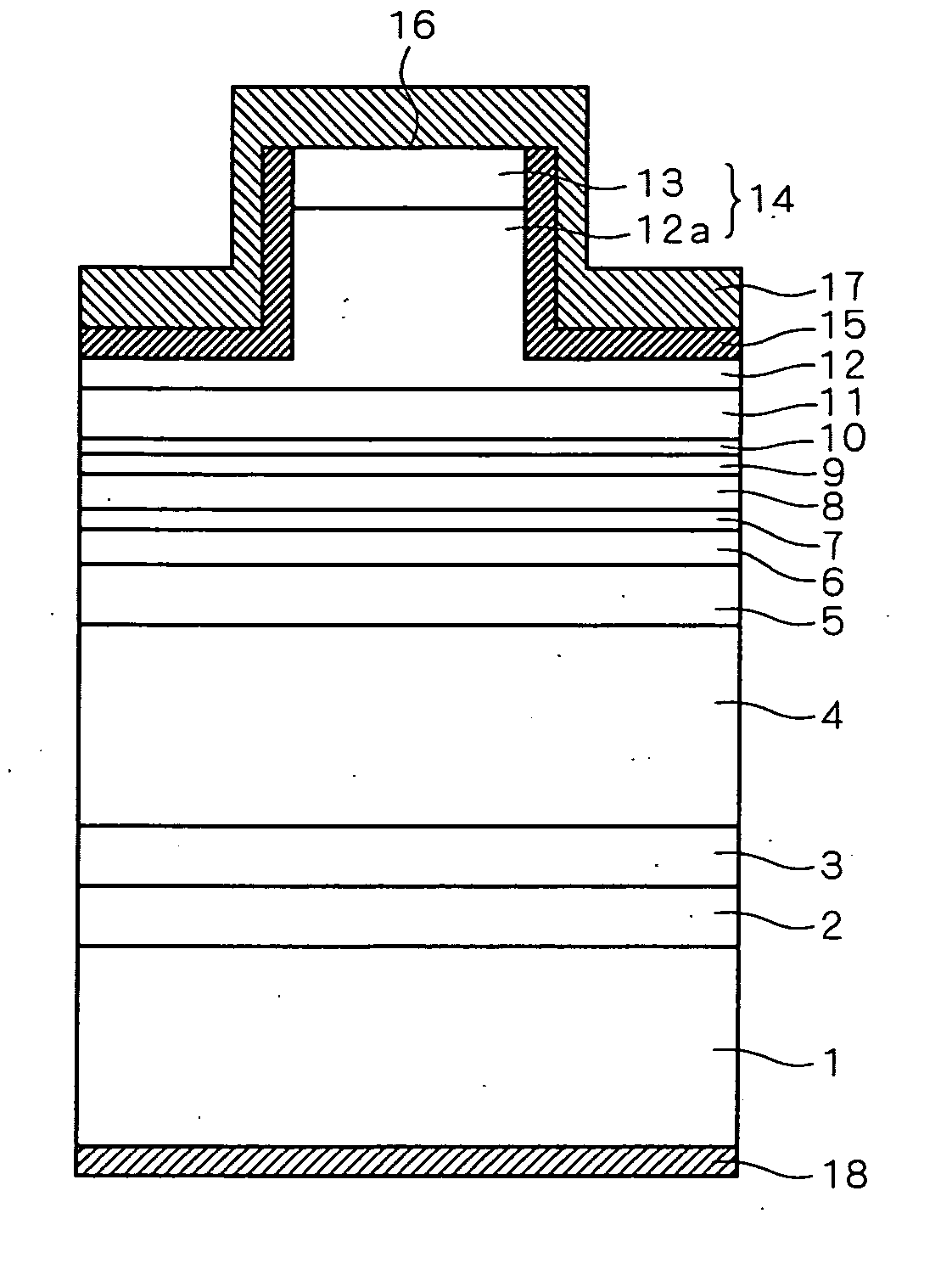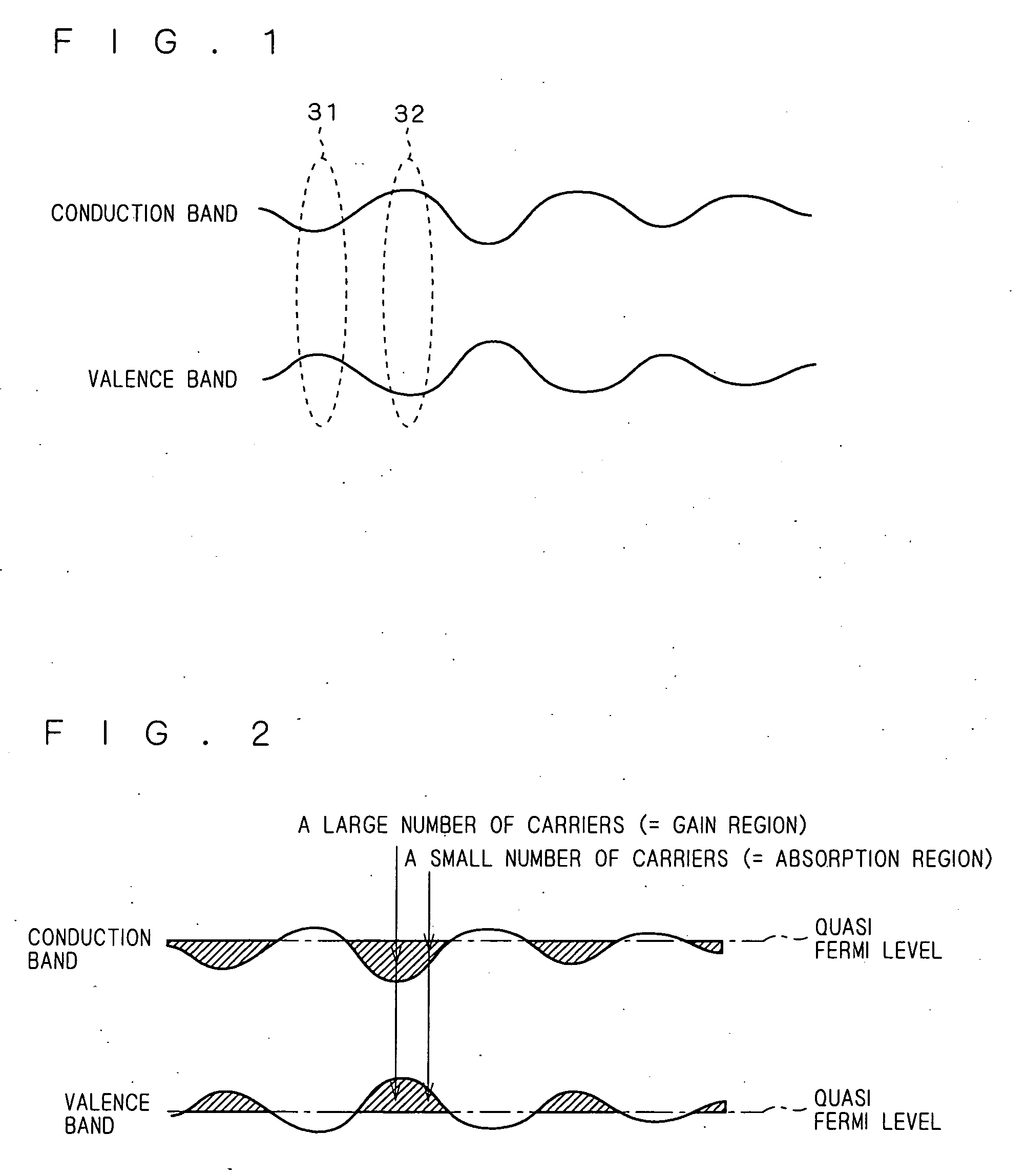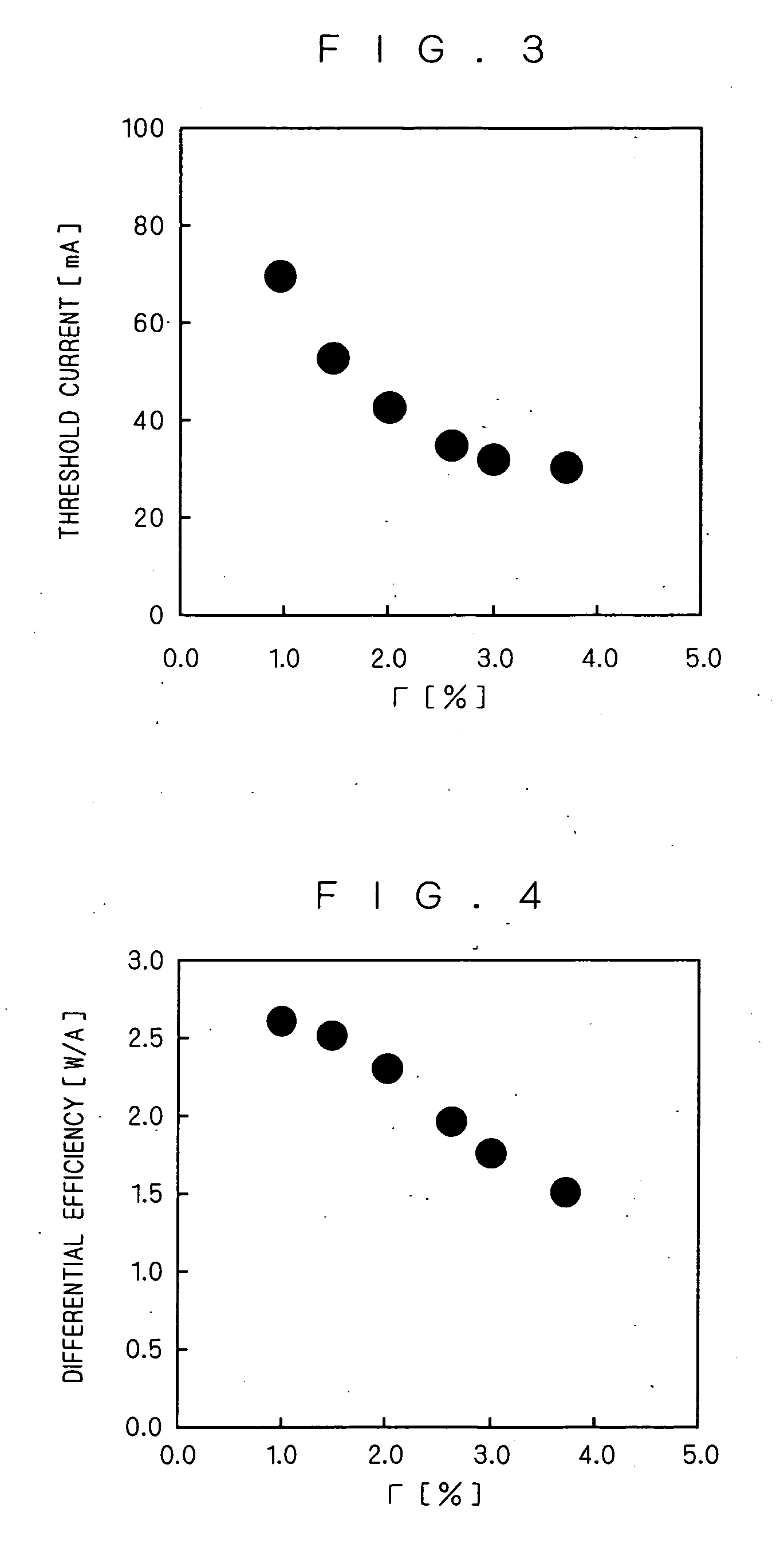Semiconductor light-emitting device
a technology of light-emitting devices and semiconductors, which is applied in the direction of heat exchangers, heat exchangers, and semiconductor lasers, can solve the problems of insufficient differential efficiency of semiconductor light-emitting devices, and achieve the effect of higher differential efficiency
- Summary
- Abstract
- Description
- Claims
- Application Information
AI Technical Summary
Benefits of technology
Problems solved by technology
Method used
Image
Examples
first preferred embodiment
[0061]FIG. 7 is a cross-sectional view illustrating the structure of a semiconductor laser (semiconductor light-emitting device) using the Group III-V nitride compound semiconductors according to a first preferred embodiment of the present invention. This semiconductor laser has a ridge structure and an SCH (Separate Confinement Heterostructure).
[0062] As shown, the semiconductor laser according to the first preferred embodiment has an n-type GaN buffer layer 2 formed on a Ga surface, namely one main surface, of a GaN substrate 1. The n-type GaN buffer layer 2 is employed in order to reduce the unevenness of the one main surface of the GaN substrate 1 so that layers can be laminated thereon as evenly as possible.
[0063] An n-type AlGaN cladding layer 3 having an Al composition ratio of 0.07, an n-type AlGaN cladding layer 4 having an Al composition ratio of 0.045, and an n-type AlGaN cladding layer 5 having an Al composition ratio of 0.015 are laminated in order on the n-type GaN b...
second preferred embodiment
[0110] Table 3 indicates the material, thickness and refractive index “n” of each layer forming a semiconductor laser according to a second preferred embodiment of the present invention. The layer numbers in the leftmost column of Table 3 correspond to the reference numbers of the layers in the FIG. 7 structure.
TABLE 3LayerRefractiveNo.Layer NameMaterialThicknessIndex “n”13contact layerp-GaN 20 nm2.46712cladding layerp-Al0.07Ga0.93N 500 nm2.501311guide layerp-GaN 100 nm2.46710electron barrier layerp-Al0.2Ga0.8N 20 nm2.42579SCH layerIn0.02Ga0.98N 30 nm2.57118well layerIn0.14Ga0.86N 3.5 nm2.765barrier layerIn0.02Ga0.98N 7.0 nm2.5711well layerIn0.14Ga0.86N 3.5 nm2.765barrier layerIn0.02Ga0.98N 7.0 nm2.5711well layerIn0.14Ga0.86N 3.5 nm2.7657SCH layerIn0.02Ga0.98N 30 nm2.57116guide layern-GaN 80 nm2.4675cladding layern-Al0.015Ga0.985N 330 nm2.53644cladding layern-Al0.045Ga0.955N1000 nm2.51733cladding layern-Al0.07Ga0.93N 400 nm2.50131GaN substraten-GaN2.467
[0111] As shown in Tabl...
third preferred embodiment
[0115]FIG. 13 is a cross-sectional view illustrating the structure of a semiconductor laser using the Group III-V nitride compound semiconductors according to a third preferred embodiment of the present invention. As shown, this semiconductor laser has the same layer structure as that of the first preferred embodiment illustrated in FIG. 7, except that the three n-type AlGaN cladding layers 3 to 5 are replaced with one n-type AlGaN cladding layer 20, and the p-type AlGaN cladding layer 12 is replaced with a p-type AlGaN cladding layer 21.
[0116] Table 4 indicates the material, thickness and refractive index “n” of each layer forming the semiconductor laser corresponding to the third preferred embodiment. The layer numbers in the leftmost column of Table 4 correspond to the reference numbers of the layers in the FIG. 13 structure.
TABLE 4LayerRefractiveNo.Layer NameMaterialThicknessIndex “n”13contact layerp-GaN 20 nm2.46721cladding layerp-Al0.03Ga0.97N 570 nm2.526911guide layerp-GaN...
PUM
 Login to View More
Login to View More Abstract
Description
Claims
Application Information
 Login to View More
Login to View More - R&D
- Intellectual Property
- Life Sciences
- Materials
- Tech Scout
- Unparalleled Data Quality
- Higher Quality Content
- 60% Fewer Hallucinations
Browse by: Latest US Patents, China's latest patents, Technical Efficacy Thesaurus, Application Domain, Technology Topic, Popular Technical Reports.
© 2025 PatSnap. All rights reserved.Legal|Privacy policy|Modern Slavery Act Transparency Statement|Sitemap|About US| Contact US: help@patsnap.com



